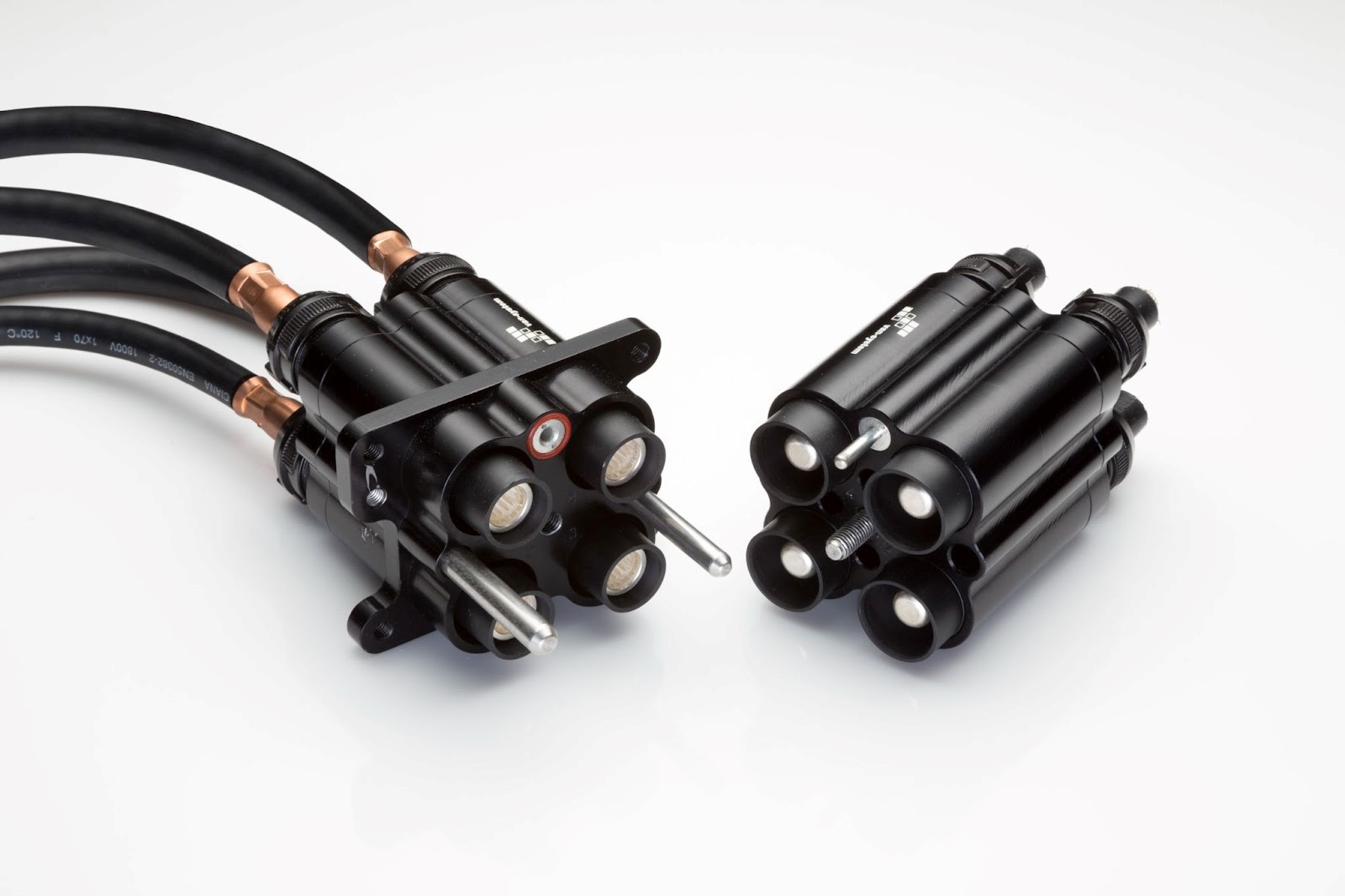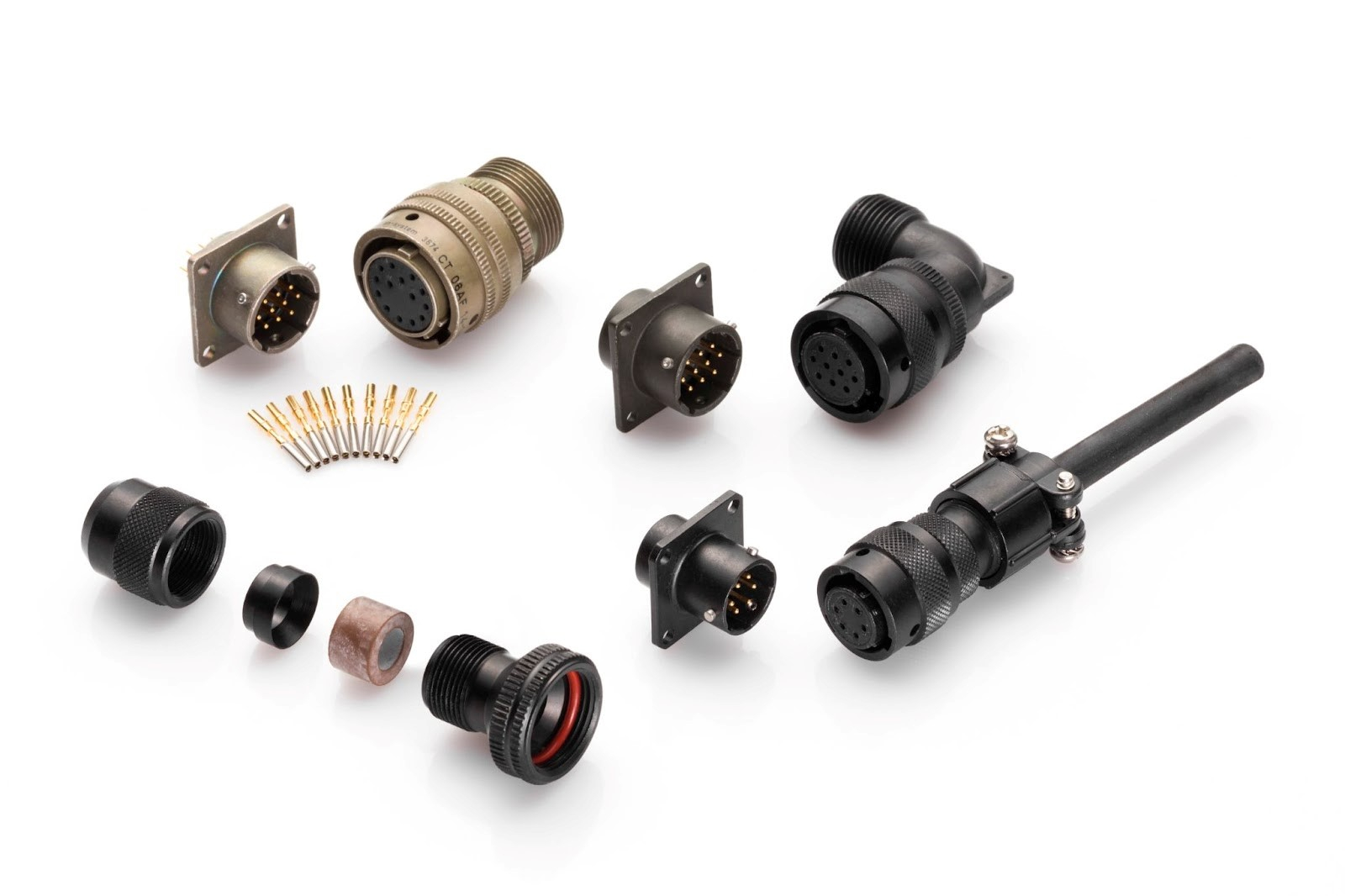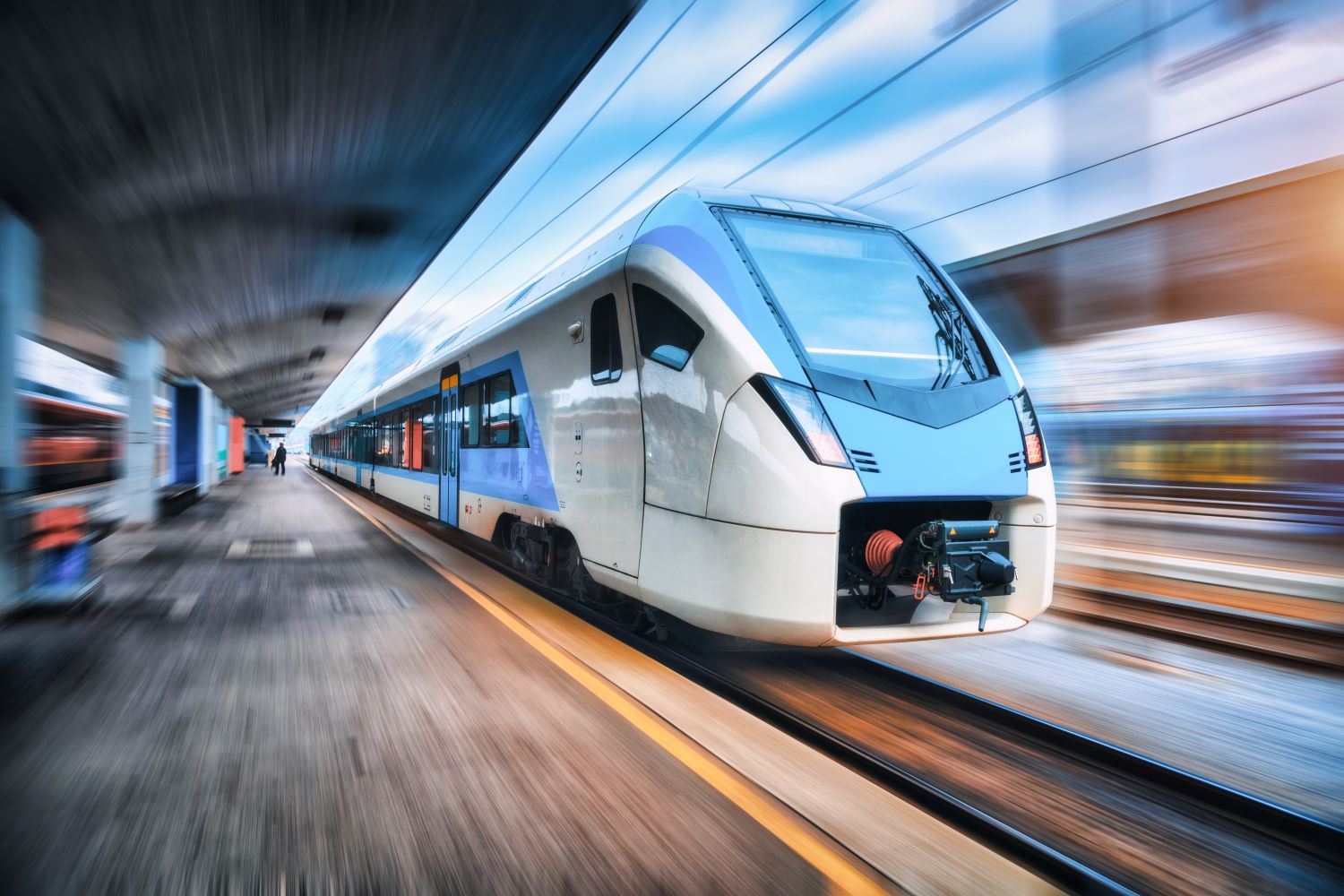5 Trends in the Railway Market
The need for greater efficiency, dependability and passenger safety has driven advancements in the railway industry in recent years. Connectors and cable assemblies for rail play an important role in ensuring seamless communication, power transmission and data connectivity. These five trends are driving the future of connectivity in the railway industry.
Electromagnetic Interference (EMI) Shielding
Railway systems are susceptible to electromagnetic interference (EMI) and radio frequency interference, which can compromise the performance of electronic components. To mitigate these risks, connectors and cables are being designed with advanced EMI shielding capabilities. Effective shielding ensures minimal disruption from external electromagnetic disturbances, safeguarding signal integrity, reducing the risk of system failures and ensuring reliable use of railway operations.
 Unlike rectangular connectors mounted in a shell, GM modular connectors are specifically designed for individual shielding for each module: it is easy and safe to mix up to seven power and data transmission lines in the same GM connector, with a significant boost in design flexibility and space optimization.
Unlike rectangular connectors mounted in a shell, GM modular connectors are specifically designed for individual shielding for each module: it is easy and safe to mix up to seven power and data transmission lines in the same GM connector, with a significant boost in design flexibility and space optimization.
Moreover, modern power converters are more demanding in terms of electromagnetic interference than in the past. We can provide separate shielding for multipole connectors in any desired shape (including the standard rectangular one).
High-Speed Data and Communication
As railway systems become more digitized, the demand for high-speed data transmission and communication increases. Connectors and cables that support high-bandwidth protocols, such as high-speed Ethernet and fiber optics, are crucial for transmitting real-time data, video surveillance, passenger Wi-Fi and other onboard services. The ability to facilitate seamless, high-speed connectivity ensures efficient operations, enhanced passenger experiences and improved safety across the railway network.
 With Ethernet Category 7A capabilities, the EVBS C7 and GM series are the best performer in the market of railway-specific ruggedized connectors. Our main customers certified an entire train data backbone up to 10 Gb.
With Ethernet Category 7A capabilities, the EVBS C7 and GM series are the best performer in the market of railway-specific ruggedized connectors. Our main customers certified an entire train data backbone up to 10 Gb.
Enhanced Reliability and Durability
Railway connectors and cables must withstand the harshest of environments, including extreme temperatures, moisture, vibration and electromagnetic interference. To address these challenges, manufacturers are focusing on developing robust and durable solutions. Connectors with enhanced reliability features – such as superior sealing mechanisms, corrosion resistance and rugged construction – provide the necessary protection against environmental factors, ensuring continuous and dependable operation even in the most demanding conditions.
 VanSystem product series dedicated to railways include anodized version certified for 1000 hours of salt spray and beyond. Moreover, the superior tightness of the circular shape ensures water tightness to the highest standard (IP68 and IP69).
VanSystem product series dedicated to railways include anodized version certified for 1000 hours of salt spray and beyond. Moreover, the superior tightness of the circular shape ensures water tightness to the highest standard (IP68 and IP69).
Compliance with Industry Standards
Connectors and cables used in the railway market need to comply with industry standards and certifications to ensure compatibility, interoperability and safety. Industry organizations establish these guidelines to guarantee the quality and reliability of railway connectors. Compliance with these standards not only ensures seamless integration within the broader railway infrastructure but also instills confidence in operators, manufacturers and passengers regarding the performance and safety of these vital components.
All VanSystem connectors are designed according to the most stringent requirements of the current relevant international regulations:
- EN 50124-1: Railway applications - Insulation coordination
- IEC 60077-1: Railway applications - Electric equipment for rolling stock
- EN 45545-2: Railway applications - Fire protection on railway vehicles
- EN 50467: Railway applications - Rolling stock - Electrical connectors, requirements and test methods
- IEC 61373: Railway applications. Rolling stock equipment. Shock and vibration tests
- NFPA 130 (ASTM E 162, ASTM E 662): Standard for Fixed Guideway Transit and Passenger Rail Systems
Miniaturization and High-Density Connectors
 Miniaturization not only saves valuable space in increasingly crowded equipment cabinets but also enables lighter and more efficient system design. High density connectors can accommodate a larger number of connections within a limited space. The ability to achieve higher connection densities empowers railway professionals to meet the growing complexity of modern train systems while ensuring reliable and efficient performance.
Miniaturization not only saves valuable space in increasingly crowded equipment cabinets but also enables lighter and more efficient system design. High density connectors can accommodate a larger number of connections within a limited space. The ability to achieve higher connection densities empowers railway professionals to meet the growing complexity of modern train systems while ensuring reliable and efficient performance.
Radiall RF CVBS Series can provide 300 arrangements up to 201 contacts in a size #40 connectors (70 mm side).
As technology continues to evolve, connectors and cables will continue to play a crucial role in shaping the future of the railway industry, enabling seamless communication, power transmission and data connectivity for enhanced passenger experiences and optimized operations. To discuss your railway interconnect solution needs, schedule a virtual meeting with our experts.


